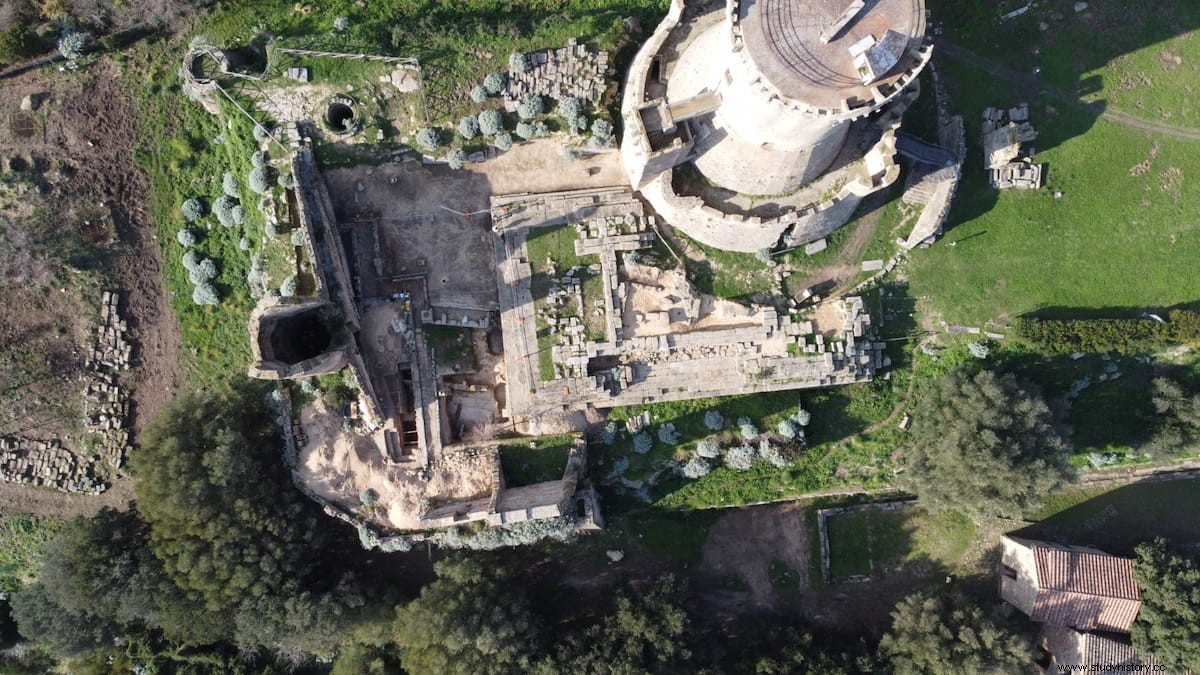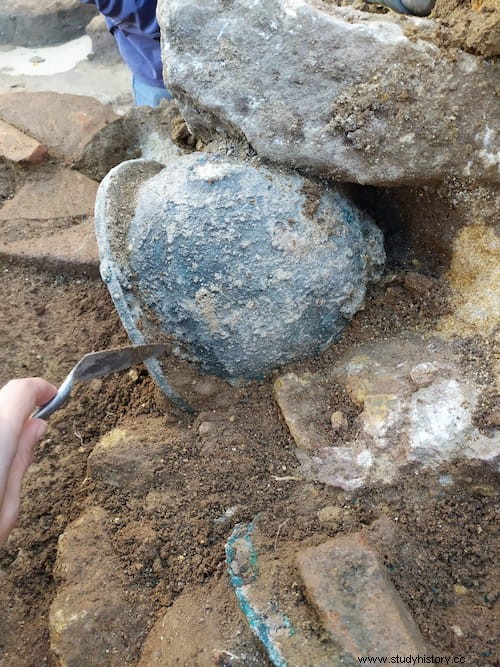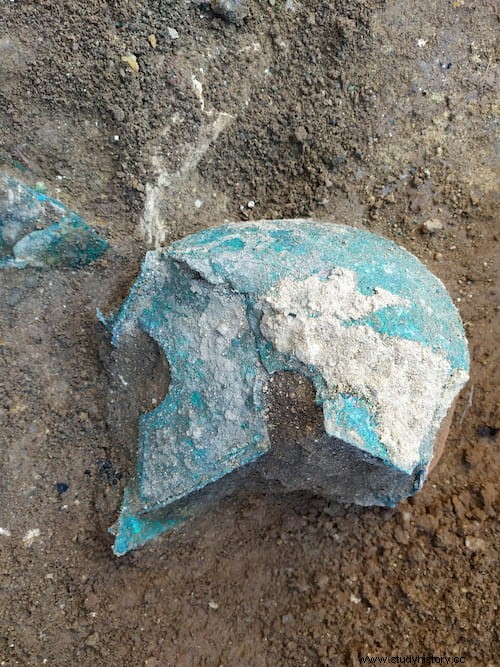The archaeological excavations in the acropolis of Elea-Velia (Campania, Italy) that have been carried out since last July have just been completed. The results of the research shed light on the oldest and most incomplete phases of the life of the city, which was founded around 540 BC. by Phocaean Greek settlers from Asia Minor fleeing from the Persians.
The archaeological investigations, planned under the direction of Gabriel Zuchtriegel, included drilling, located in different points of the Acropolis, and responded to two important objectives:to know the initial organization of the Acropolis of Velia and to solve problems of chronology of the main sacred structures of the city.
On the basis of previous archaeological investigations, started in the 1920s and continued intermittently until the 1990s, the existence of an archaic sacred structure prior to the main temple of the Acropolis of Velia was hypothesized, albeit with strong doubts. In particular, it was thought to be situated on the highest terrace at the western end of the Acropolis.

Recent excavations have not only confirmed the existence of a sacred building, but have also clarified its location, layout, chronology, and relationship to more recent structures. In fact, the archaeologists of the Archaeological Park of Paestum and Velia have brought to light remains of unfired brick walls, plastered and founded on block plinths placed side by side in a polygonal shape, a technique also used for the dwellings of the archaic period found along the slopes of the acropolis.
These tests point to a rectangular building at least 18 meters long and 7 meters wide. The interior part of the structure is paved with a floor of beaten earth and tiles, on which, in a collapsed position, elements of the elevation, painted ceramics, vases with inscriptions "IRE", or "sacred", and numerous fragments of metal belonging to weapons and armor. It consists of two helmets, one of the Greek chalcid type and the other of the negau type. Etruscan, in excellent state of conservation.

Archaeological finds on the acropolis of Elea-Velia suggest that the structure was used for sacred purposes , says Massimo Osanna, General Director of the Museums and Acting Director of the Archaeological Park of Paestum and Velia. In all probability, the relics offered to the goddess Athena after the Battle of Alalia, the naval confrontation between the Greek refugees of Phocaea and a coalition of Carthaginians and Etruscans, between 541 and 535 BC, were kept here. approximately, off the coast of the Tyrrhenian Sea, between Corsica and Sardinia. Released from Earth just a few days ago, the two hulls have yet to be cleaned in the lab and studied. It is possible that there are inscriptions inside it, something quite common in ancient armor, which could help to accurately reconstruct its history, perhaps even the identity of the warriors who wore it. These are certainly initial considerations that already clarify many unpublished details of this Eleatic history that occurred more than 2,500 years ago.
The excavations have also clarified the chronology of the main temple of the city, dedicated to the goddess Athena. The construction of the main temple, at least an early phase of it, must take place chronologically after the sacred structure brought to light in recent months. Later, in the Hellenistic period, the entire complex will receive a complete rearrangement with the construction of a monumental stoa that will surround the main temple and the plan of use will rise to cover all the previous phases.
The oldest temple structure dates back to 540-530 BC, the years immediately after the Battle of Alalia , Hosanna points out, while the most recent temple, believed to be from the Hellenistic era, dates back to 480-450 B.C., and was renovated in the 4th century B.C. . It is therefore possible that the Phocaeans fleeing from Alalia erected the temple immediately after their arrival, as was their custom, having bought land from the locals to settle and resume the flourishing trade for which they were famous . And to the relics that they offered to their goddess to propitiate her benevolence, they added the weapons that they had taken from their enemies in that epic naval battle that, in fact, had changed the balance of power in the Mediterranean .

Thanks to a large team of professionals and collaborators, the work has made it possible to answer open questions for more than seventy years, on which numerous and eminent scholars have pronounced over time. The results have clarified the topography, architecture, use and chronology of the different phases of the Acropolis, from the Bronze Age to the Hellenistic period . – says the archaeologist of the Park, Francesco Uliano Scelza – We are now working on other projects that this research has inspired, for its use, study and enhancement. Among them, the remodeling of the Acropolis, which will become visible and visitable in all its parts, and the remodeling of the exhibition spaces of the Palatine Chapel and the church of Santa María, to make the already attractive Velian landscape .
Fonts
Archaeological Park of Paestum and Velia
